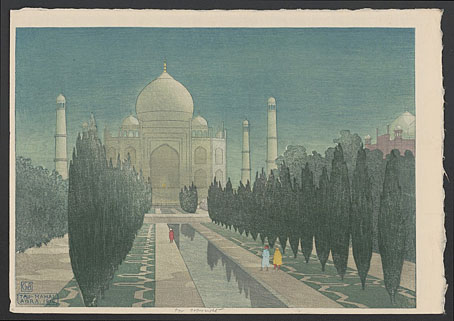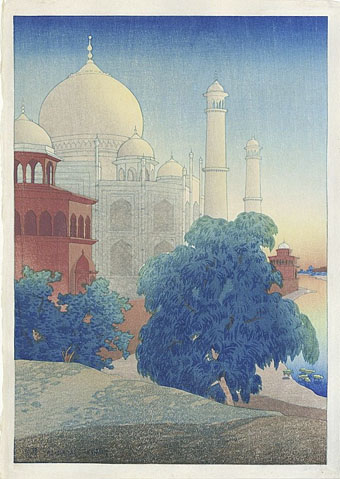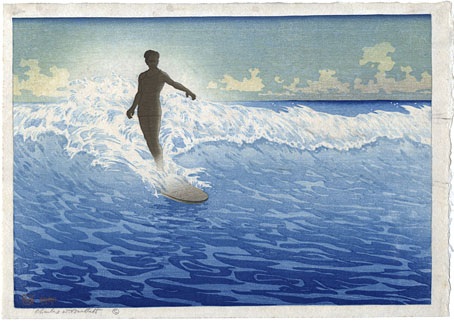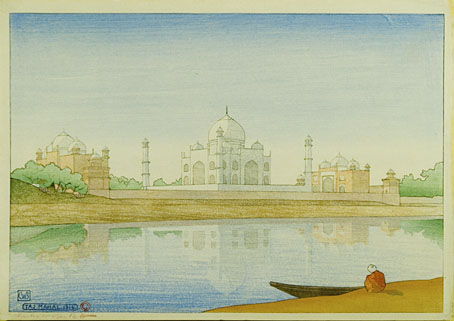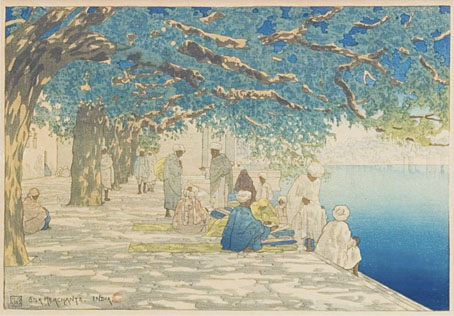Taj Mahal, Agra (1916).
In which British artist Charles W. Bartlett (1860–1940) applies the later style of ukiyo-e landscapes to his views of India and Hawaii. Bartlett was one of a handful of Western artists to have his work reproduced by a Japanese publisher of woodblock prints, Watanabe Shozaburo, so his mastery of the form may be taken as having been given a literal seal of approval.
Taj Mahal, Sunset (1920).
Considering the popularity and influence of Japanese prints I’m surprised that more artists haven’t attempted series productions like Hokusai’s Thirty-Six Views of Mount Fuji, rather than simply borrowing the familiar approach to line and colour. To date the only Western example I know of is Henri Rivière’s Hokusai homage, Thirty-Six Views of the Eiffel Tower (1902). Charles Bartlett could have done the same with the Taj Mahal, a subject he returned to often enough, and a building which, like the Eiffel Tower, is recognisable even in silhouette.
Hawaii, The Surf Rider (1921).
Taj Mahal (1916).
Silk Merchants, India (1919).

